I’ve translated a lot of 2D to 3D. A lot. Translation is an education. You learn a good deal from the exercise. For many 2D artists the limitless possibilities of a creating worlds populated by beings not bound to the physical world, the real physical world, and how a 2D character translates to 3D isn’t a concern. And why should it be? They’re telling a story, not designing statues.
One of the first things you learn is to recognize the possible and try and find a way to make it look not possible. What will the material not do and how can you make it look as if it can?
You learn to look for the preponderance of evidence, stylistically. If an artist draws a forearm the same way in fifty frames and then changes it up in two, you go with the fifty. And most importantly, you have to teach yourself to get out of your own way.
By the time I started Frazetta’s Ghoul Queen, I’d been around that interpretive block a few times. I knew and loved Frank’s work from the very early days of Creepy and Eerie, when I was but a callow faced boy. No sweat. No worries. Easy-peasy.
Three days in, there was some sweat. Worries were mounting. Easy? No so much. It wasn’t working. It wasn’t Frank. I left the studio frustrated and discouraged. The next day, I found a bunch of things to do and successfully avoided looking at or working on the Queen. The following day I realized I’d broken the cardinal rule. I was so far in my own way I couldn’t see Frank. It was the belly. The Frazetta Belly. For three days I tried everything I could to alter her shape. Because of my own aesthetic bias I was redesigning the Queen to what pleased me, not what pleased Frank. When I embraced the belly, there was meager perspiration, virtually nary a worry and I was headed toward the path of Easier Street.
There was the issue of designing the base. Changes had to be made, in part, because if I did a literal interpretation, I’d have to address what those Ghouls were doing with each other. I mean, really. There could be no good to come of it. So, keeping true to the spirit of the piece while addressing the more practical issues, I reduced the number of her admirers to one.
Then came Moon Maid. I chose Ghoul Queen because the art was so specific. Moon Maid was defined by Frank’s mastery of brush work, vague and evocative. Having learned my lesson, I embraced the rump and hardly broke a sweat.
After Moon Maid, I was ready to tackle more Frazettas. I had my list. At the top, Swamp Demon. But the best laid plans….
A few years later, my friend and fellow Geezer, Arnie Fenner, commissioned me to do a Frazetta Barbarian. I knew the painting. Hell, everyone knows the painting. The trick was how to interpret it. I spent some time designing, trying to break it down to its essentials. He was a full figure. He was a bust. She was in. She was out. And combinations of this and that until I came up with a design I thought worked. Rather than default to my usual buffed and polished finished, I let the painting, in particular, Frank’s brush strokes, dictate how I worked the wax. We knew, going in, it would be finished as a bronze, for all intents and purposes, a monochrome. So, texture became even more important. Arnie was patience personified. It was some months when I started the clay to taking the piece to wax, to finish, molding, casting and bronzing.
I think we’re both pretty happy with the result. Now, Swamp Demon?


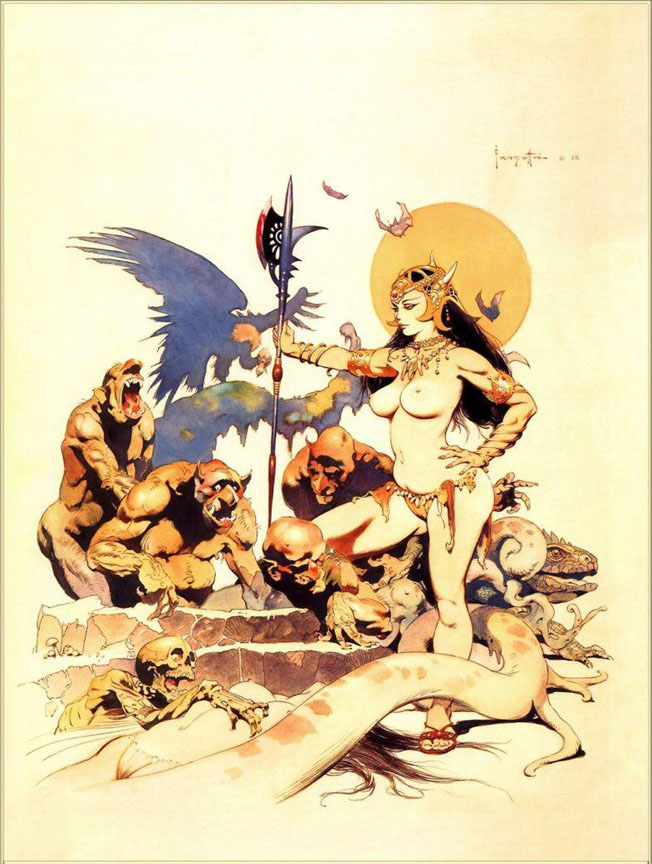
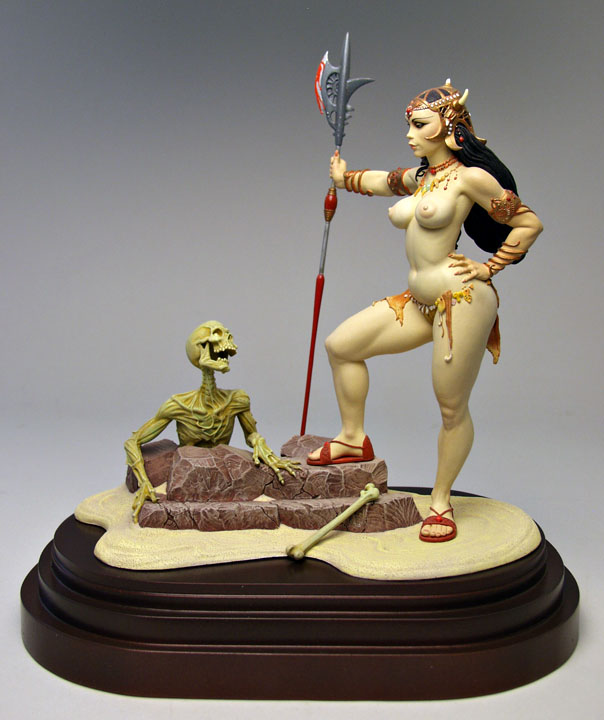
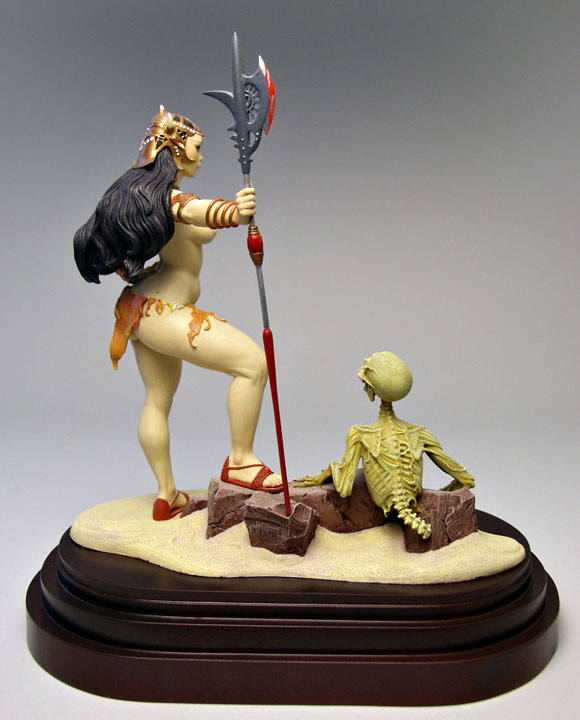
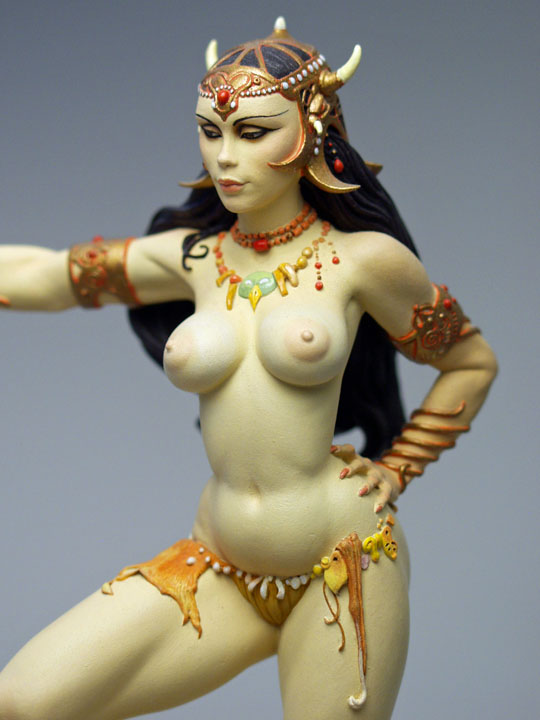
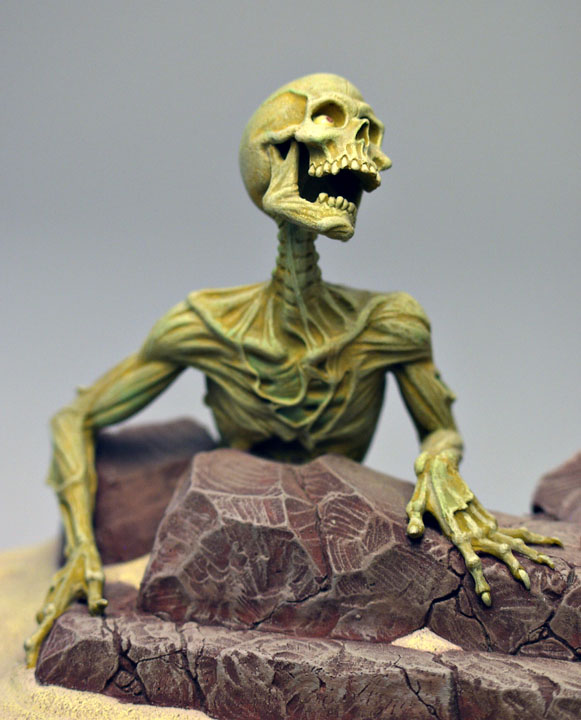
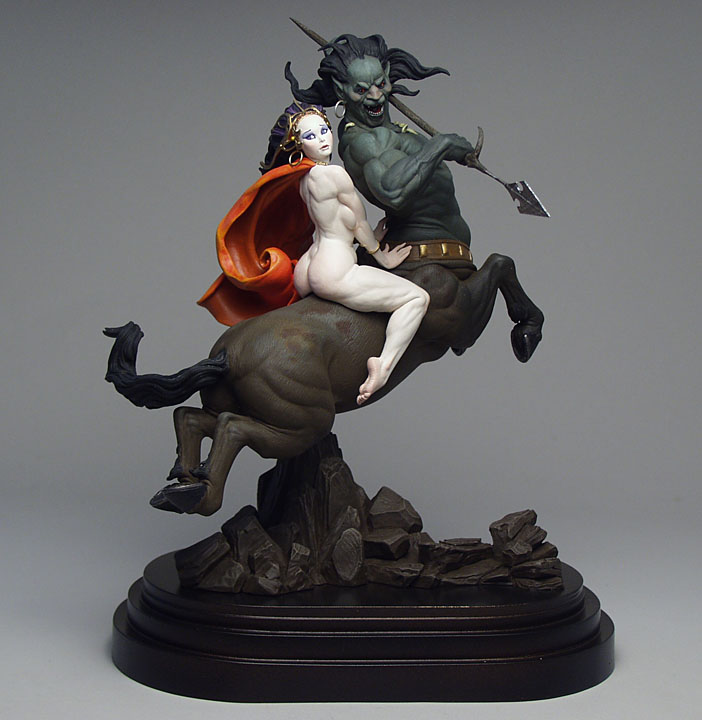
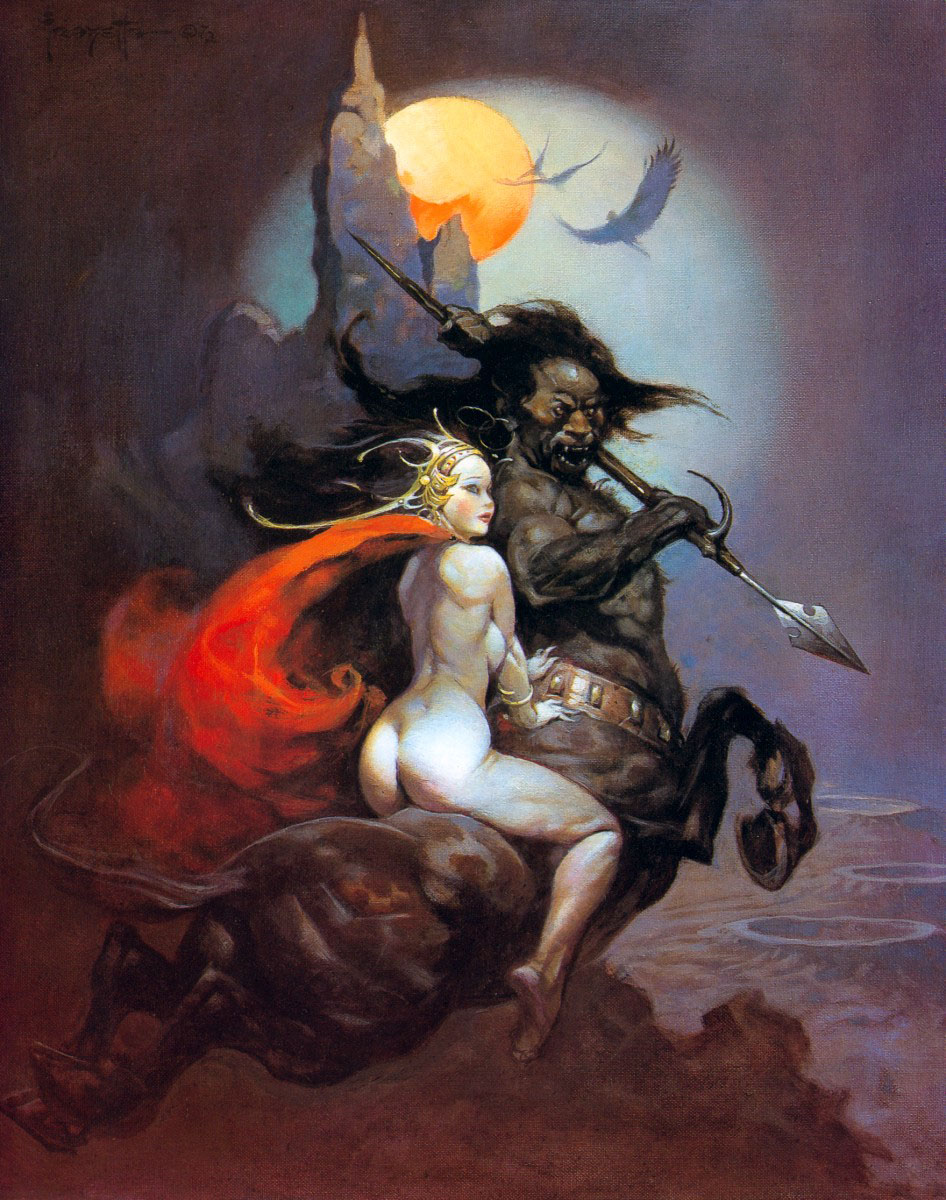
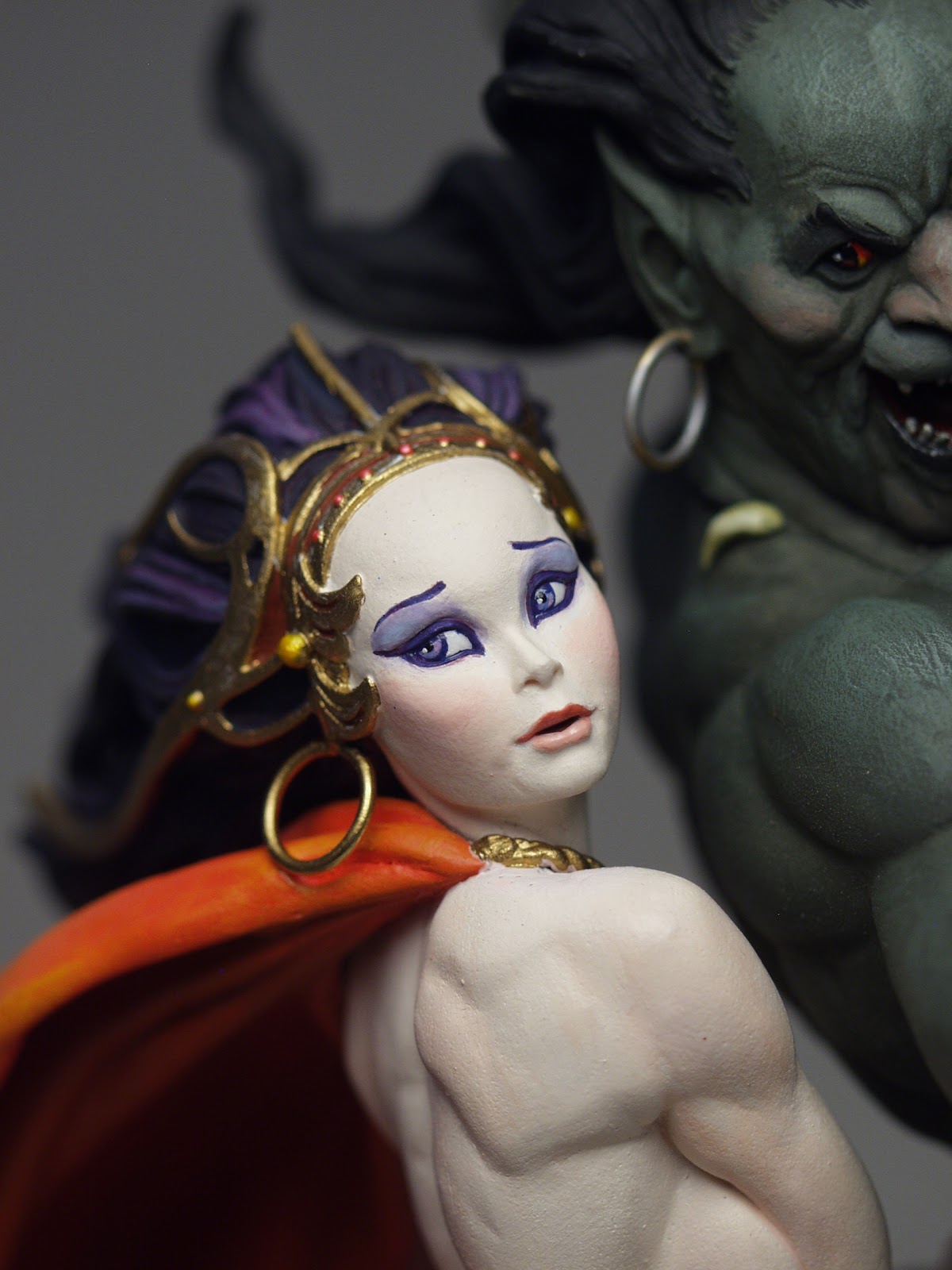

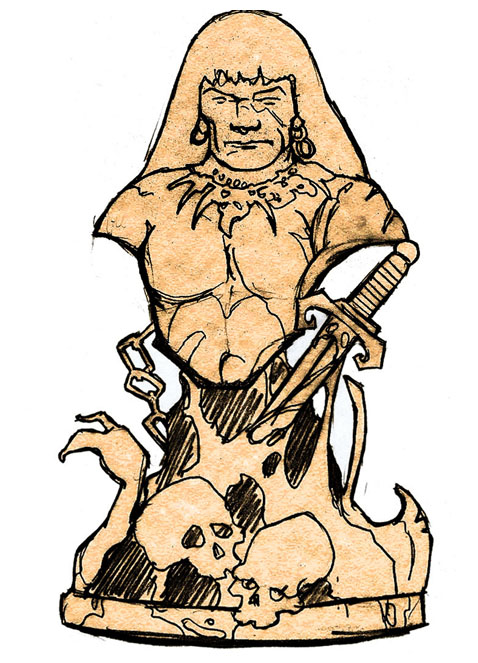
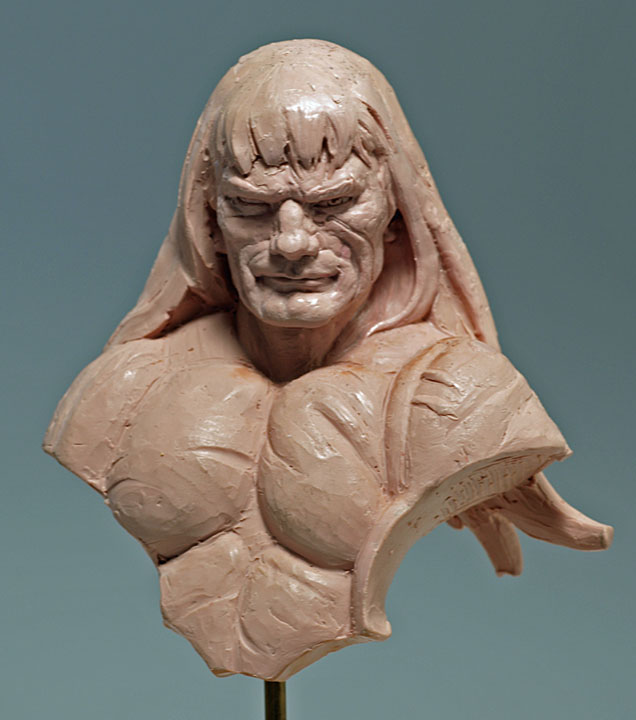

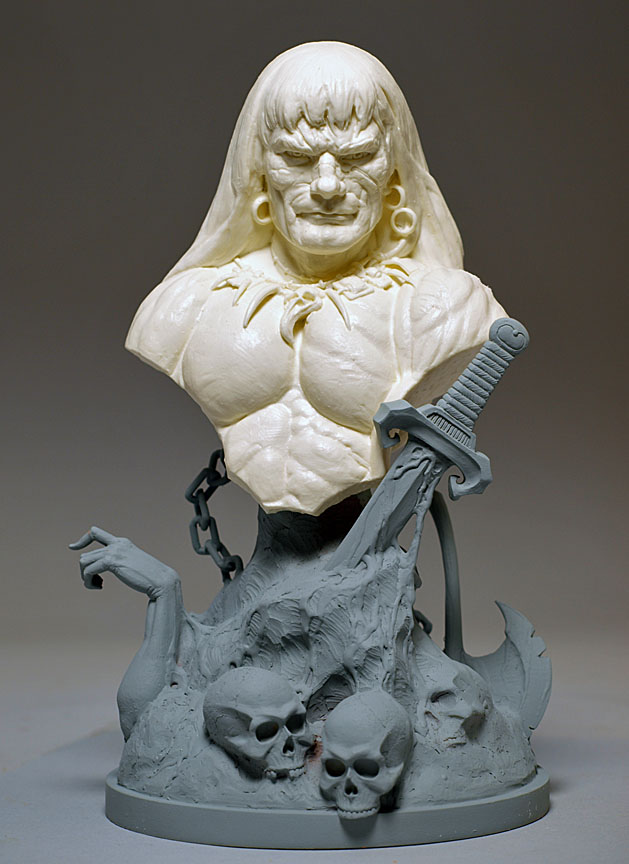
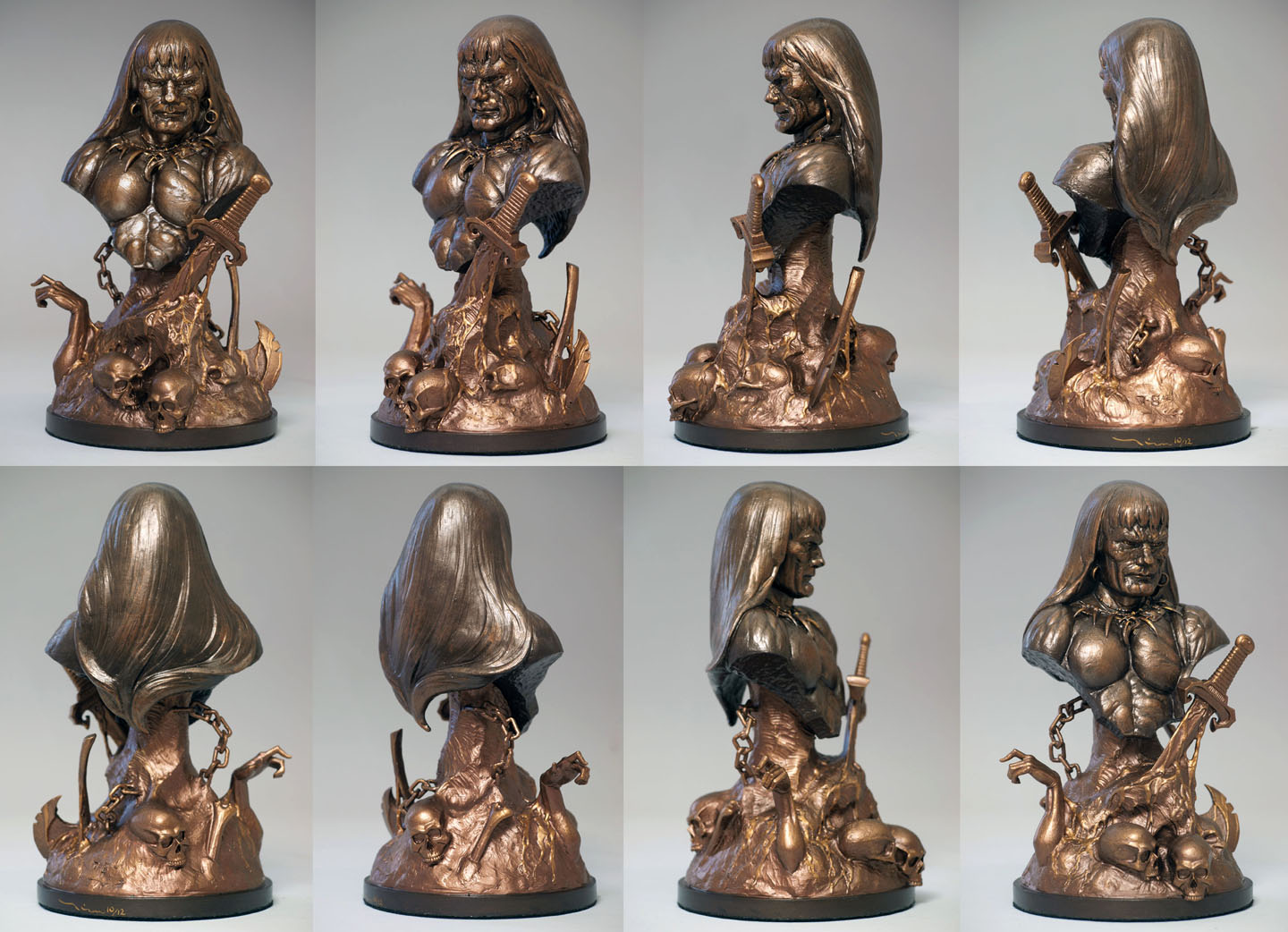
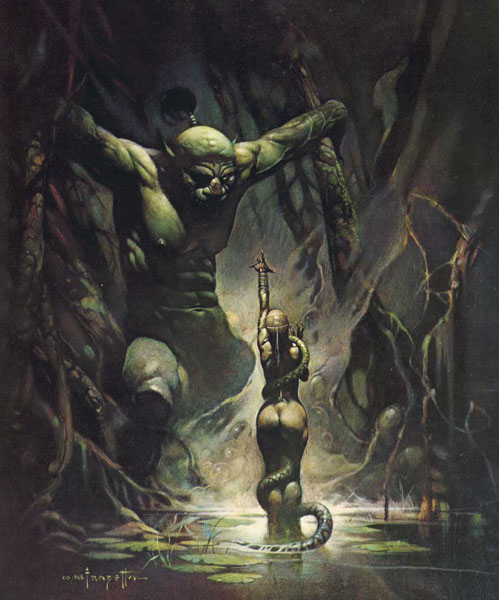
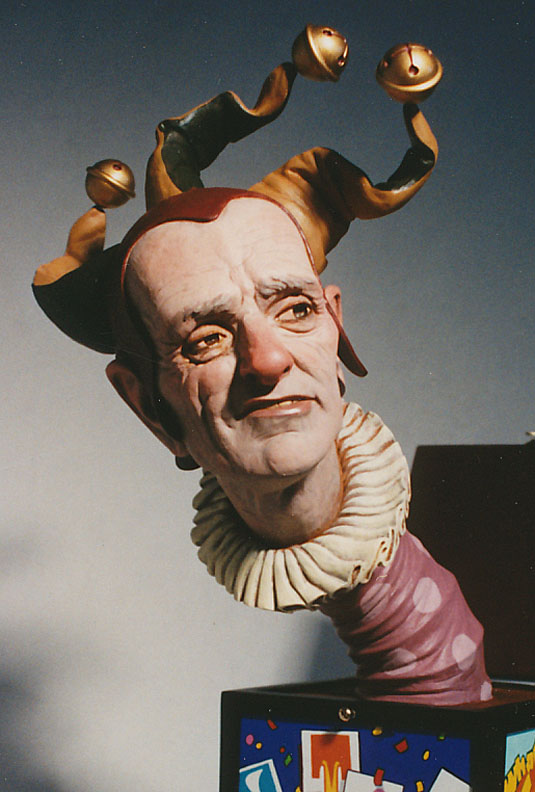
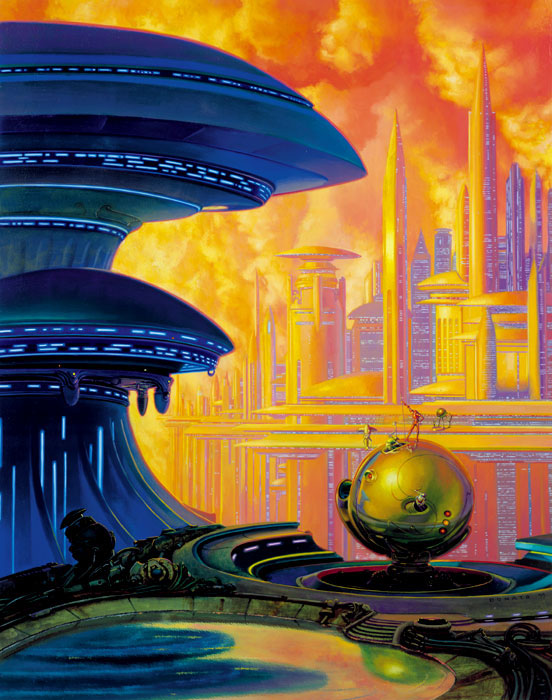
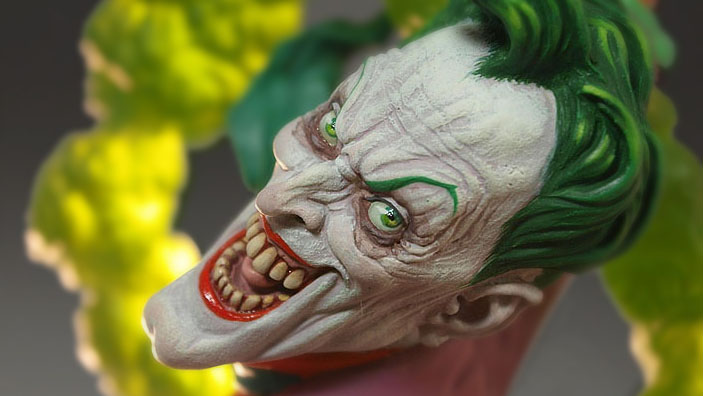
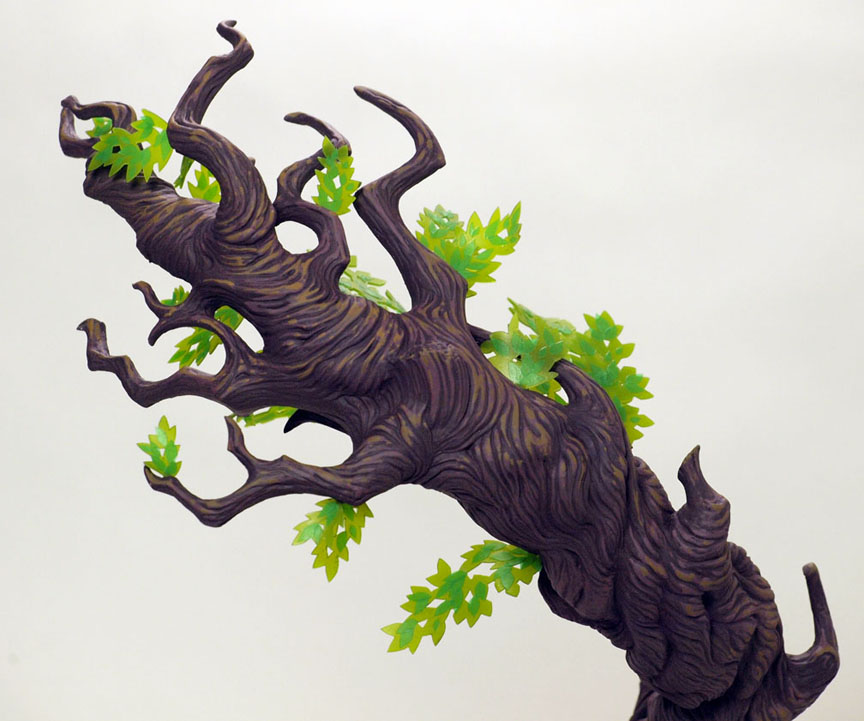
What material things?
Tim, you just keep blowing me away! These are beyond words… well, not exactly but you get my meaning 😛
I especially like Moon Maid. You can really feel the centaur (?) leaping in the cool air, the muscles flexing… I'm just fascinated by the rendering of the maid's shoulder area.
And Conan is just wow. I would totally have that in my living room!
I was wondering what might be the dimensions of these pieces?
Translating Frazetta's work from 2D to 3D really is a challenge because Frank routinely distorted anatomy to suit his needs: it's a testament to Tim's skill that he was able to pull it off so successfully.
True story: I took the prototype for “Ghoul Queen” to the Frazettas for their final approval before production. Ellie was thrilled and Frank was tickled, saying, “Isn't she a pretty little thing!” Suddenly he looked at me with a serious expression and asked, “Do I really paint women with asses this big?” And I said, “Yep, you do.” Frazetta got a huge grin on his face and said, “Good! I thought I was slipping!”
This is very cool and interesting… 🙂
Y'know, this is slightly off topic, but with Conan and the scary critters and such in this post I thought I'd give it a try. If you want great reference photos of people genuinely terrified, check out these photos from Nightmare Fears Factory in Niagara Falls, Canada: http://www.nightmaresfearfactory.com/top-40-fear-pics-september-2012 .
More photos at the bottom of that page. Fascinating.
very awesome. I feel like re watching his documentary now.
I LOVE your Moon Maid…where can I get her? I bet she's expensive ,_;
Amazing work, thanks for posting.
Effin' great work, and a superb post.
Howdy,
With subject matter like that, how could you not produce a winner. Great work!
Brian Riedel
Woah, the best thing of following this blog are this kind of posts. This is the first time in my live that I get such a close look at the workflow and thinking process of an sculpter. And its really impresive!
Fantastic job, Dan.
Big Farm
Big Farm is an awesome multiplayer farm management game made by the Goodgame Studios.
Your mission is simple: Create a big farm, grow crops, breed animals,
and become the richest farmer of the universe. Enjoy Goodgame's Big Farm!
I definitely enjoying every little bit of it. It is a great website and nice share.
Signature: slither io | wings io | science kombat | tank trouble 4